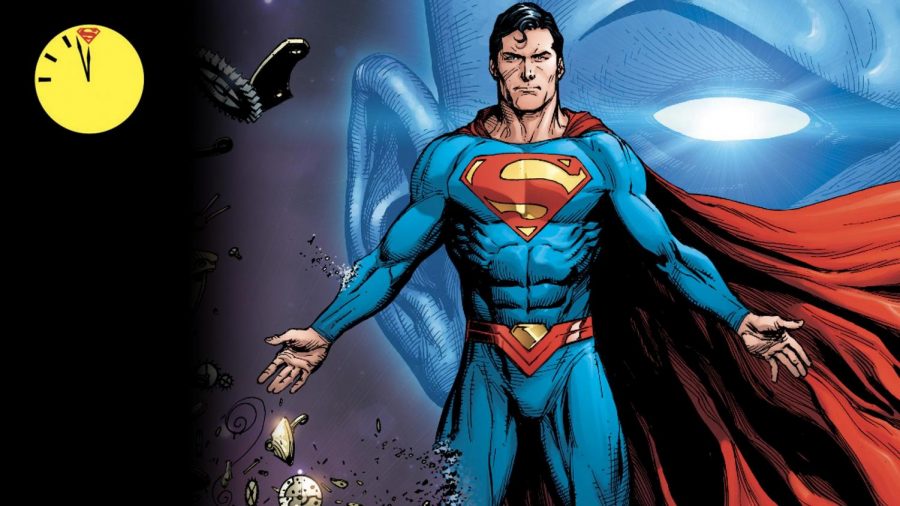The Doomsday Clock is Ticking…
The Doomsday Clock is a timekeeping device used to determine roughly how close the world is to nuclear war. It moves closer to midnight as its maintainers, the Atomic Scientists’ Board, deem global destruction is imminent. The pervasive sense of doom that accompanies the Doomsday Clock was a prominent theme of the classic graphic novel “Watchmen,” with each chapter’s cover showing the clock moving closer to midnight and blood falling until at the end, the clock was drenched in it.
The story was set during the Cold War in an alternate 1985 (not “Back to the Future: Part II”) where superheroes have been outlawed after several incidences of violent vigilante activity. In this bleak, ultra-realistic and cynical universe, the all-powerful Dr. Manhattan helped the United States win the Vietnam War, buoying Richard Nixon to be elected to a fifth term in office after the Twenty-Fourth Amendment was abolished. As tensions rise across the globe and the nuclear apocalypse seems imminent, billionaire philanthropist Adrian Veidt, once the “costumed adventurer” Ozymandias, seeks to promote peace by any means, even if it means sacrificing the reputations and lives of his former friends. Drawn into a web of intrigue, Ozymandias and Manhattan’s former comrades Nite Owl, Silk Spectre, Rorschach and the Comedian seek to unmask the conspiracy as more and more of them fall prey to the whims of a world that none of them saw coming.
Enough background; it’s time to get on with the show. “Doomsday Clock” is also the title of a limited DC Comics series that sees its first issue debut next Wednesday. This series has massive implications for the DC Universe, as it marks the first time that the characters of Watchmen meet with the heroes of DC. It has been confirmed already that Dr. Manhattan had a hand in the events of “Rebirth” last May, either having created the previous New 52 universe, much more pessimistic than DC’s usual fare, or at least significantly altered events. Dr. Manhattan’s disgust with humanity following the events of “Watchmen” inspired him to create his own universe, so perhaps this mystery of what universe he created will finally be solved. Also, when Wally West tried to return to Earth, he left the Comedian’s blood-stained smiley face button embedded in the Batcave wall. Batman and Flash investigated the button, but only witnessed the death of the villain Reverse Flash in a stream of blue light, button in hand, after claiming to have seen God. All these are trademarks of the omnipotent Dr. Manhattan, who was seen grabbing the button at the end of the crossover of the same name.
Now, thanks to some early-release cover art, it is confirmed that Batman possesses another Watchmen artifact: the journal of the psychopathic vigilante Rorschach, whose mask resembles an inkblot test and shifts depending on his mood and movements. Rorschach, who sees the world in black and white, was killed by Dr. Manhattan after determining to inform the world of the truth behind Ozymandias’s horrific actions; namely, that he sacrificed three million people to a fake alien invasion to unite the world against a common foe. “Watchmen” author Alan Moore has said that Rorschach resembles a more realistic version of Batman, so it will indeed be interesting to see how these two interact, considering the fact that a release of the first few pages of “Doomsday Clock” implies that Rorschach is alive in 1992, when the events of the story begin. What also will be an interesting character dynamic is the divergence of Superman and Dr. Manhattan.
The story revolves around these two titans, hailed as the epitome of invulnerability in their own worlds, somehow meeting and feuding over their views on humanity. Whereas Superman is an alien whose exposure to Earth’s atmosphere grants him superhuman powers and love for his adoptive parents enables him to embrace his humanity and responsibilities, Dr. Manhattan is a human turned into a blue radioactive being in a horrible nuclear lab accident who can manipulate matter, transmit his conscience into multiple places, enlarge or shrink himself at will, and essentially play God in all that he does. Because of his elevated state and deeply scientific approach to the universe, Manhattan sees humans as just one more form of life in the universe who will die out eventually, and feels little responsibility to care for them. In a way, Manhattan is also a superman, but more in the Nietzschean sense of one who has transcended the limits of humanity so much as to be coolly unconcerned with human affairs.
Much remains unanswered, but one thing is clear: if “Doomsday Clock” really is to mark the end of “Rebirth” once the final issue is released in October 2018, it will mark a comics initiative that pulled out all the stops and always respected its characters to the very end.
Your donation will support the student journalists of Saint Louis University.




